So, you’ve decided to push your business through paid social. But which platform should you focus on? Should you use a variety? What’s your objective? Is it cost-effective?
The decisions can seem endless. Fear not, we have summarised the pros and cons of the most popular platforms using our own experience, research and expertise to help you navigate through the paid social minefield.
To understand which platform is likely to provide the best return on investment for your next advertising push, it’s important to understand the typical cost of 3 key metrics across each platform, namely Cost per Click (CPC), Cost per Mile (CPM) and Click-through Rate (CTR). We have a snapshot of this below;
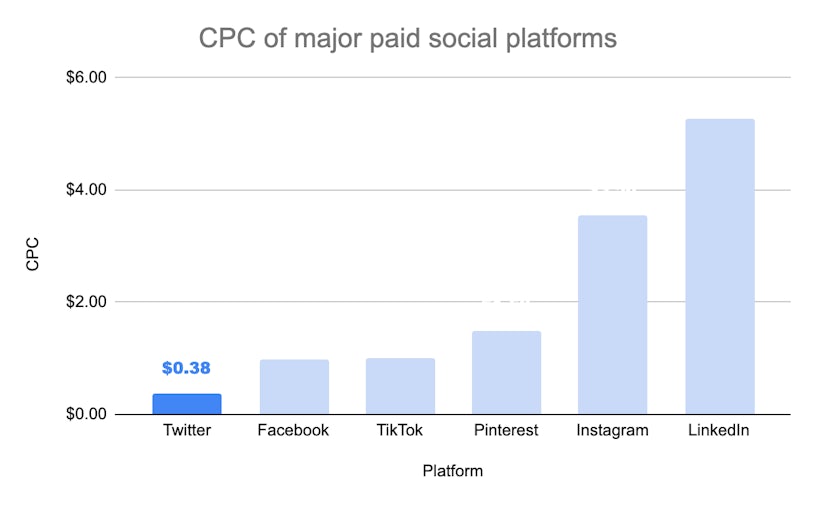
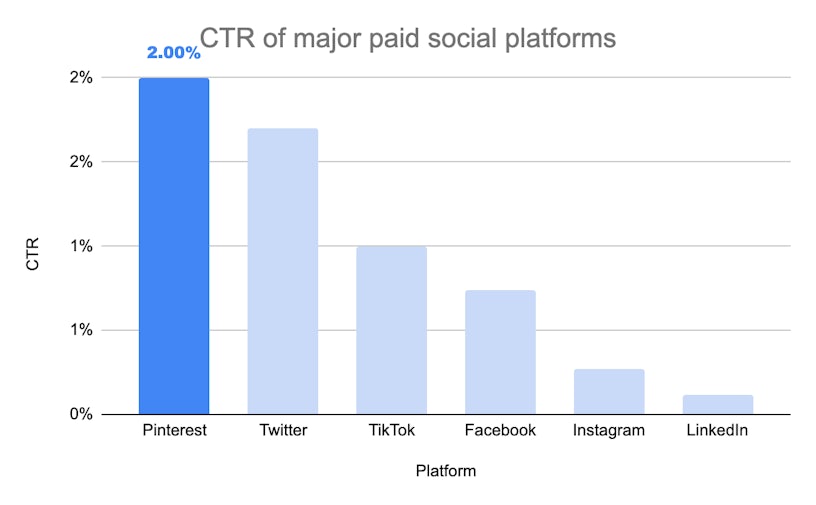
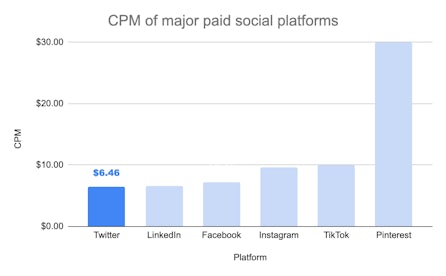
Whilst these numbers are useful, they do not tell the full story of what each platform can offer. From targeting options, budget scales, content, and business objectives, there are many factors to bear in mind.
- Meta
- Audience reach and scale
- Placement fluidity & machine learning
- TikTok
- Content format and user experience
- Audience demographics and behaviour
- Engagement and virality
- Creativity and authenticity
- Audience and purpose
- Professional context
- Lead generation
- Twitter (Now ‘X’)
- Ad-hoc trends & hashtags
- Conversational engagement
- Visual discovery and inspiration
- Shopping and product focus
- Final thoughts
Meta
Audience reach and scale
In terms of daily users, Meta owns some of the largest social platforms in the world. Facebook ranks 1st, WhatsApp ranks 3rd, and Instagram ranks 4th worldwide. This in turn can provide you with access to a vast range of audiences, which is beneficial for brands seeking widespread visibility, all from an advertising suite that encompasses Facebook, Instagram and WhatsApp (Threads is likely pending too).
Placement fluidity & machine learning
Meta Ads allow you to utilise its machine learning capabilities, arguably, more efficiently than other platforms, as Meta is able to deliver ads on a mixture of placements (primarily Facebook and Instagram) to deliver results. For instance, if you have set an objective of ‘maximise conversions’ then Meta will be able to divert traffic accordingly towards Instagram or Facebook based on the actions it’s seeing across those platforms.
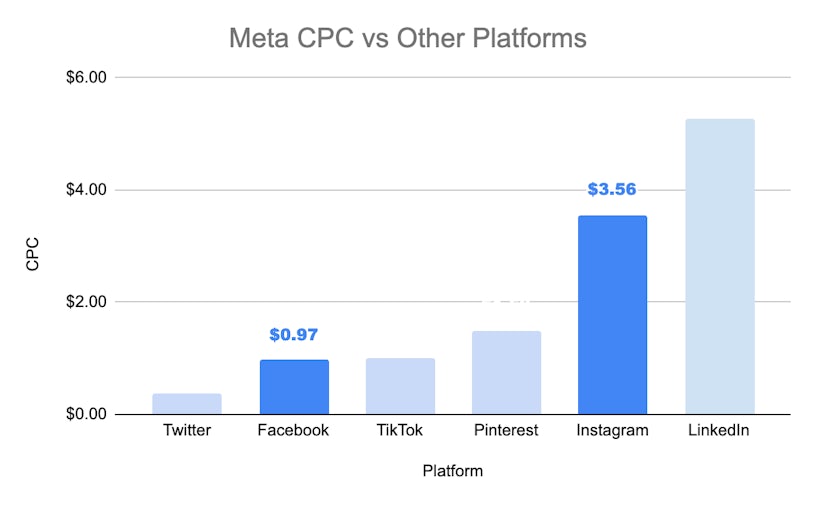
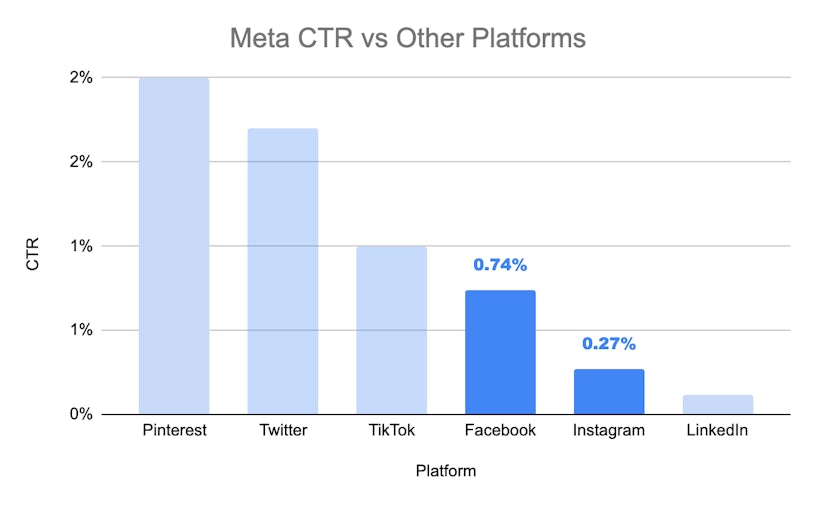
Meta performance vs Competitors
In terms of key metrics, Meta’s platforms tend to differ. Whilst Facebook and Instagram usually have similar CPMs, Facebook typically produces cheaper traffic thanks to its stronger CTR than Instagram. This difference has led to Facebook being one of the more efficient platforms for driving traffic.
Much of this difference in performance can be attributed to the typical ad delivery on both platforms. Facebook ads tend to be delivered in-feed which are more likely to deliver traffic, whereas Instagram leans towards delivering spend across Reels and Stories which are often viewed without necessarily driving clicks.
TikTok
Content format and user experience
TikTok is primarily focused on short-form video user-generated content (UGC), often set to trending music, visuals and audio effects. This is distinct from other platforms (Instagram Reels excluded) that may offer a more traditional mix of text, images, and videos. Successful advertisers on TikTok should create engaging video content that aligns with the platform’s unique style of having UGC front and centre of its offering.
Audience demographics and behaviour
TikTok has gained popularity, especially among younger audiences. While other social platforms may have a broader user base, TikTok’s core demographic tends to skew towards younger age groups, primarily teens and young adults with 86.4% of male and 84.5% female users aged below 34. However, with over 1.09 billion active monthly active users, if this isn’t your audience, there may still be a niche for you, as older demographics are increasing rapidly.
Engagement and virality
TikTok’s algorithm is known for its ability to quickly spread content virally, allowing even relatively unknown creators to gain significant organic traction. This can provide even small brands with the potential for wide exposure, provided their content resonates with users.
Creativity and authenticity
TikTok values creativity and authenticity, with users responding well to content that feels genuine and relatable. If your brand also values this, your content may do well with content that feels native to TikTok’s environment.
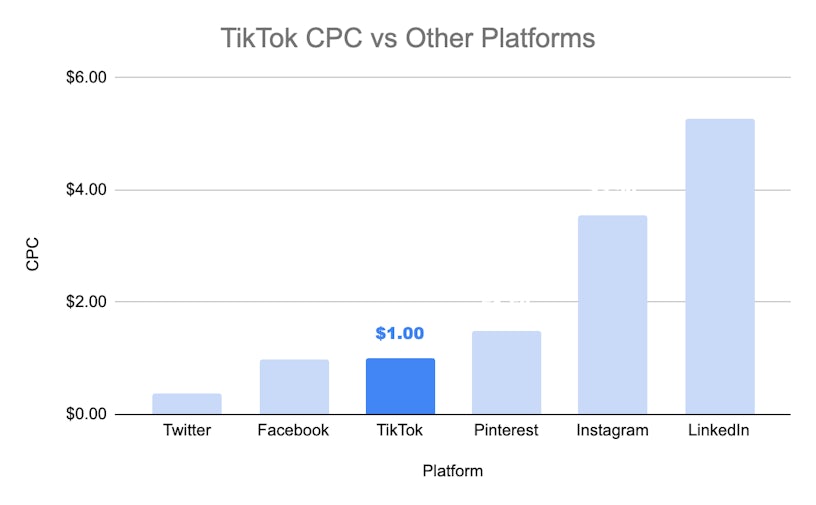
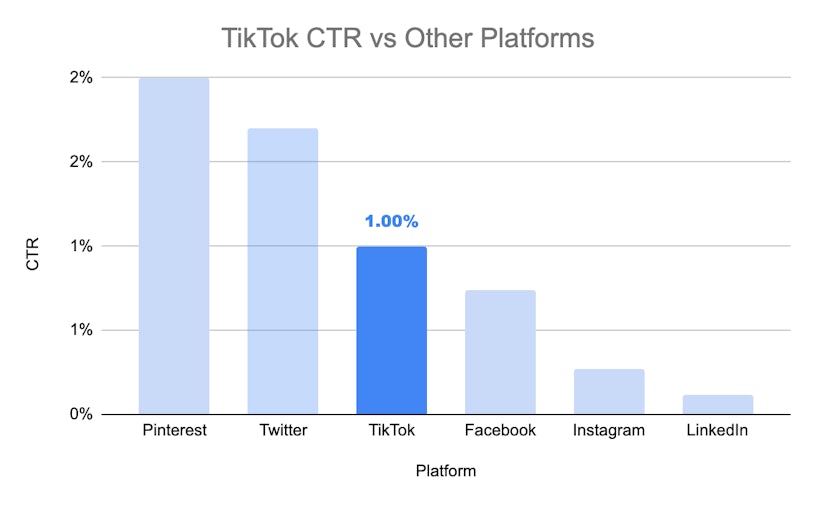
TikTok performance vs Competitors
TikTok tends to sit in the middle range versus its competitors. This in itself can be surprising as its users tend to view content quickly before scrolling through to the next video, this makes the CTR result impressive compared to its closest rival Instagram (in particular reels) which tends to drive more expensive traffic and delivers a worse CTR.
Audience and purpose
LinkedIn is a professional networking social media platform, which makes it suited for B2B advertising and targeting a more business-oriented audience. Other social platforms like Facebook and Instagram tend to have a broader user base that includes both personal and professional users. However, be aware that not everyone on LinkedIn might be as professional as you.
Professional context
Users on LinkedIn are in a professional mindset when using the platform, which can influence the type of content and messaging that resonates. You can leverage this context to promote products and services relevant to business needs.
Lead generation
Despite the higher CPC, LinkedIn is well-suited for lead generation campaigns in the B2B space. Whilst most platforms offer this campaign type, you can use LinkedIn to drive high-quality leads, utilising the highly-specific targeting options to reach business decision-makers across various industries/sectors.
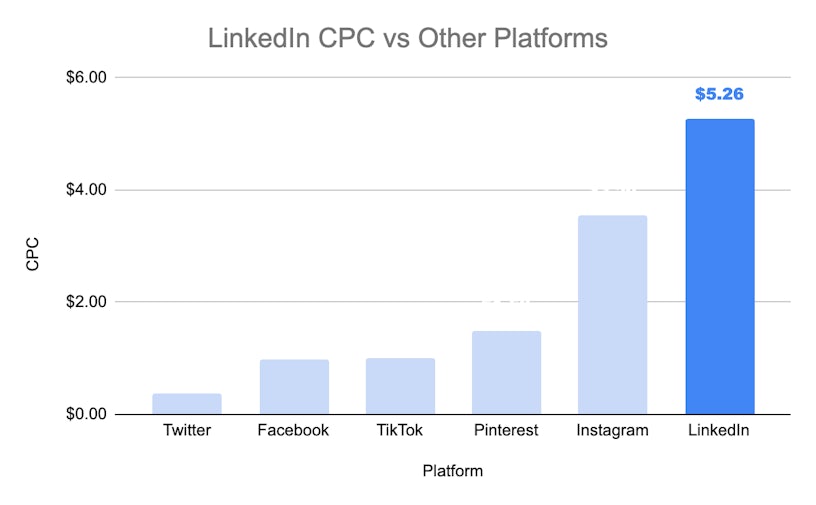
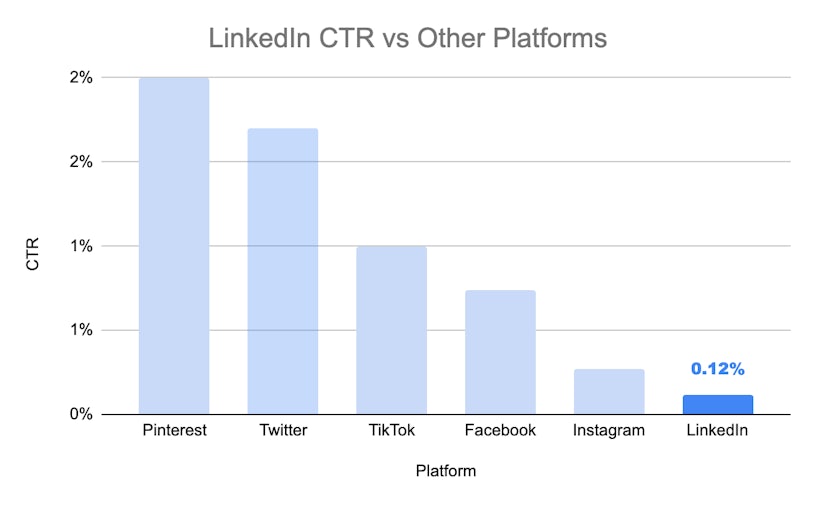
Key metrics performance vs Competitors
LinkedIn is typically more expensive in terms of CPC versus other platforms. This is despite having one of the cheaper CPMs, the reason for the expensive CPC can be attributed to the CTR which tends to be much lower.
Twitter (Now ‘X’)
Ad-hoc trends & hashtags
Hashtags and trending topics play a significant role on Twitter, allowing you to join ongoing conversations and trends. This can lead to increased visibility and engagement if used effectively.
Conversational engagement
Twitter encourages direct interactions and conversations between users. Ryanair is a classic example of this both through organic and paid content;
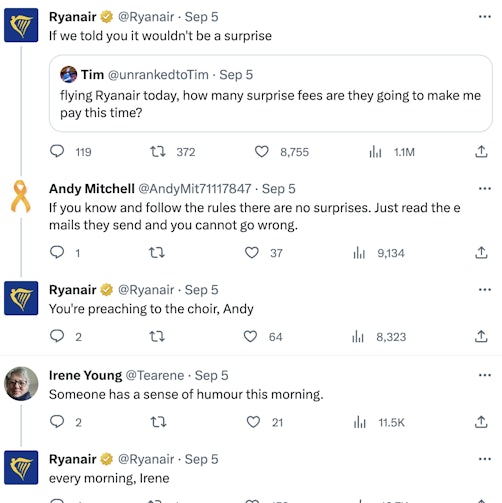
Like Ryanair it’s great to engage with users through replies, retweets, and conversations, creating a more conversational and interactive advertising experience.
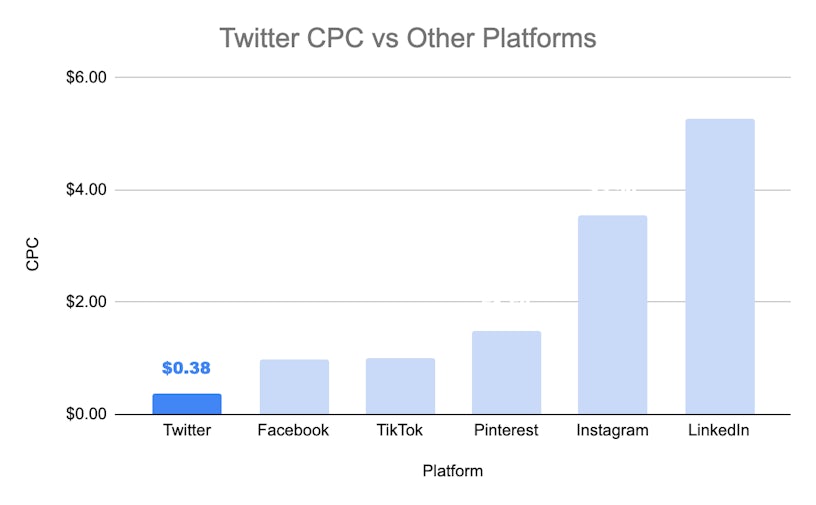
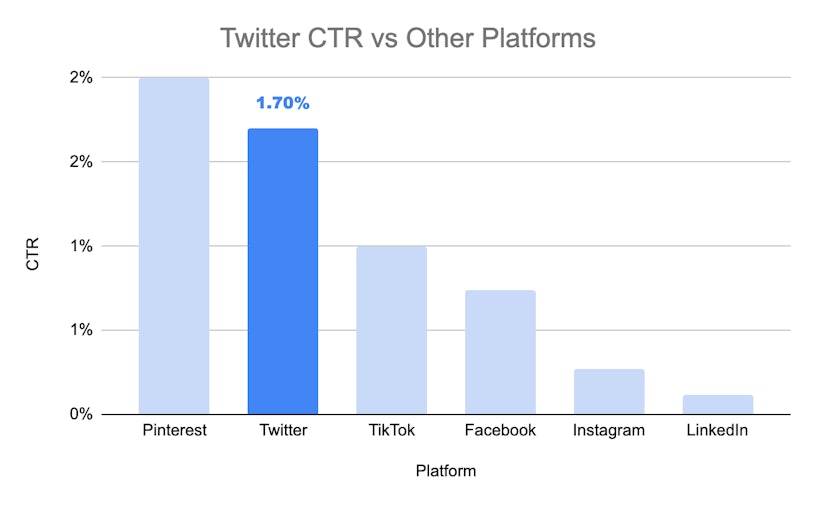
Key metrics performance vs Competitors
Twitter is really competitive in terms of CPC. This is thanks to both having a really cheap CPM and one of the strongest CTR versus other social media platforms due to its ability to effectively leverage trending and relevant topics/hashtags as part of its targeting. With these really competitive metrics if you are looking to drive traffic at an efficient rate you should consider investing in Twitter advertising services.
Visual discovery and inspiration
Pinterest is focused on visual content and discovery. Users come to Pinterest to find ideas, inspiration, and products. This sets it apart from platforms that might prioritise social interactions or news updates.
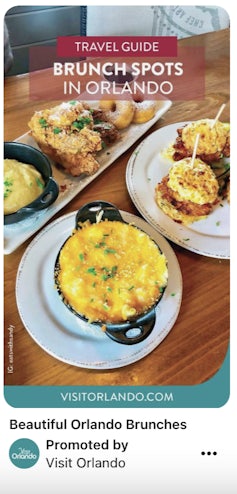

Shopping and product focus
Pinterest is popular for shopping-related searches and product discovery. Users often use the platform to plan for purchases, making it an attractive space for e-commerce businesses.
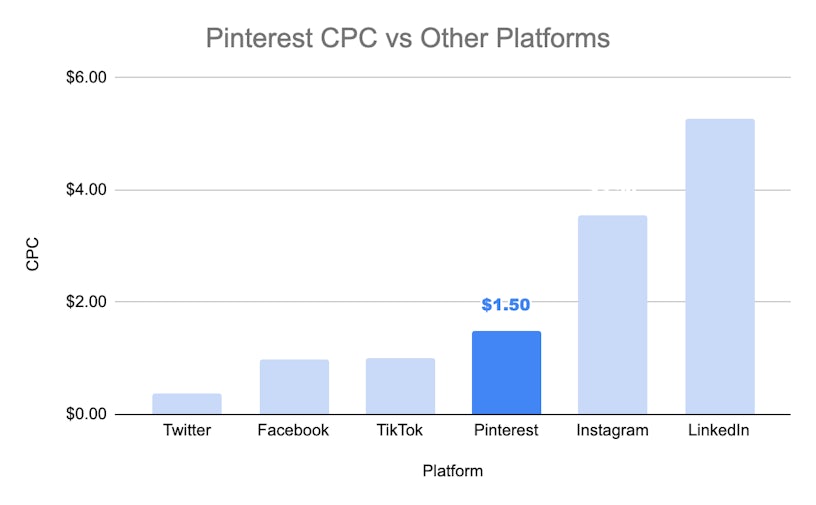
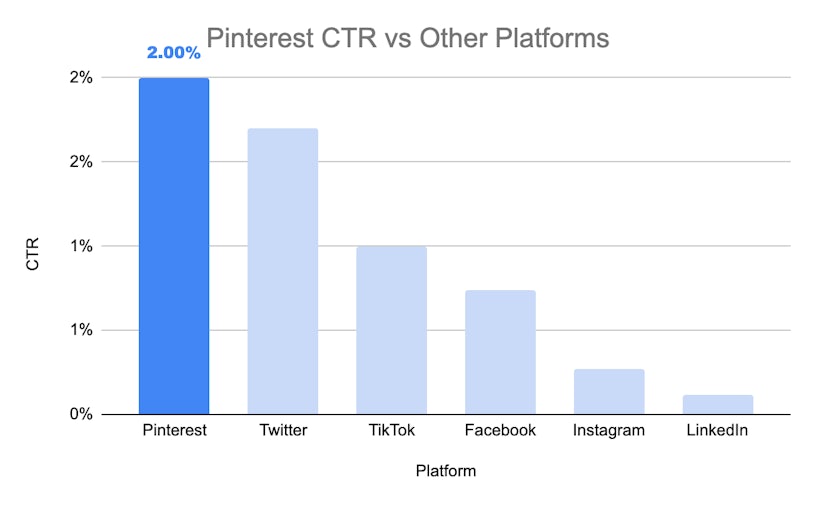
Key metrics performance vs Competitors
Pinterest produces a mixed bag of statistics. Typically Pinterest has the most expensive CPM versus other platforms, however, this is offset by having the strongest CTR. When all things are considered this ends up producing a CPC which falls into the middle range when compared against its competitors.
Final thoughts
As you can probably tell when it comes to picking out the perfect social platform there isn’t a one-size-fits-all answer. It’s always best to carry out audience research prior to launching your activity and ask yourself what is your ultimate goal, before selecting your platform or platforms of choice.
Key avenues to consider can include using third-party tools such as SimilarWeb to pinpoint how much traffic is being driven by channels for competitors or businesses in similar verticals. It’s also a great idea to reference where your existing organic traffic is coming from using tools like the Google Analytics referral report as this could help paint a clearer picture of where your typical user base is.
Using this information we can gauge which platforms are most likely to support objectives.
Here are two simple scenarios:
- If your objective is to drive quality leads for a construction company that specialises in high-rise buildings, you will most likely want to utilise LinkedIn’s highly specific B2B targeting, despite the more expensive CPCs, as this will have more value to the business than driving cheaper traffic from irrelevant audiences.
- If your objective is to raise awareness for an FMCG brand, then LinkedIn is not the optimal choice. As the barrier to entry for these products is much lower you would be wiser to select a platform such as Facebook or TikTok that will enable you to reach a broader audience for a cheaper cost.
This is of course not to say choices are set in stone, with so many options available it’s vital to test which approach works for your business by gathering data on each platform. Armed with this, you can feel safe in your ability to pivot to another platform when performance needs adjusting.
For more tips and advice, check out our other paid social blogs.





